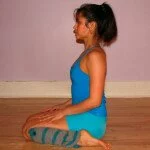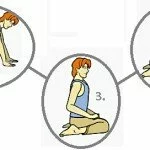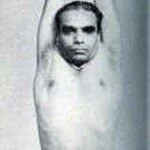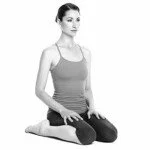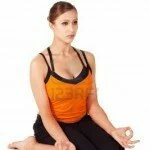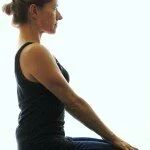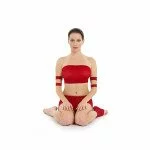Virasana (vir-ah-sah-nah[needs IPA]; Sanskrit: वीरासन; IAST: vīrāsana) or Hero Pose is an asana.
The name comes from the Sanskrit words vira meaning “man” or “hero” or “chief”, and asana (आसन, Āsana) meaning “posture” or “seat”
Step by Step:-
- Kneel on the floor (on a folded blanket to pad your knees, shins, and feet if necessary), with your thighs perpendicular to the floor, and touch your inner knees together. Slide your feet apart, slightly wider than your hips, with the tops of the feet flat on the floor. Angle your big toes slightly in toward each other and press the top of each foot evenly on the floor.
- Exhale and sit back halfway, with your torso leaning slightly forward. Wedge your thumbs into the backs of your knees and draw the skin and flesh of the calf muscles toward the heels. Then sit down between your feet.
- If your buttocks don’t comfortably rest on the floor, raise them on a block or thick book placed between the feet. Make sure both sitting bones are evenly supported. Allow a thumb’s-width space between the inner heels and the outer hips. Turn your thighs inward and press the heads of the thigh bones into the floor with the bases of your palms. Then lay your hands in your lap, one on the other, palms up, or on your thighs, palms down.
- Firm your shoulder blades against the back ribs and lift the top of your sternum like a proud warrior. Widen the collarbones and release the shoulder blades away from the ears. Lengthen the tailbone into the floor to anchor the back torso.
- At first stay in this pose from 30 seconds to 1 minute. Gradually extend your stay up to 5 minutes. To come out, press your hands against the floor and lift your buttocks up, slightly higher than the heels. Cross your ankles underneath your buttocks, sit back over the feet and onto the floor, then stretch your legs out in front of you. It may feel good to bounce your knees up and down a few times on the floor.
Anatomical Focus:-
Upper back
Therapeutic Applications:-
High blood pressure
Benefits:-
- Stretches the thighs, knees, and ankles
- Strengthens the arches
- Improves digestion and relieves gas
- Helps relieve the symptoms of menopause
- Reduces swelling of the legs during pregnancy (through second trimester)
- Therapeutic for high blood pressure and asthma
Contraindications and Cautions:-
- Heart problems
- Headache: Practice this pose lying back on a bolster.
- Knee or ankle injury: Avoid this pose unless you have the assistance of an experienced instructor.
Beginner’s Tip:-
Often the inner top feet press more heavily into the floor than the outer top feet. Press the bases of your palms along the outer edges of the feet and gently push the pinky-toe sides of the feet to the floor.
Variations:-
Clasp your hands, extend your arms forward (perpendicular to your torso and parallel to the floor), turn the palms away from your torso (so the thumbs point to the floor), then raise the arms on an inhalation perpendicular to the floor, with the palms facing the ceiling. Stretch actively through the bases of the index fingers.
Preparatory Poses:-
- Balasana
- Baddha Konasana
Follow-Up Poses:-
- Padmasana
- Bakasana
Inversions, backbends, and standing poses
Deepen The Pose:-
Cup your hands around the knees, straighten the arms fully, and pull on the knees. Firm your shoulder blades against your back, lift the top sternum, and release your chin down onto the chest without straining the back of your neck. Hold for 10 to 20 seconds. Then let go of the knees and raise your head back to neutral without losing the lift of the sternum.

